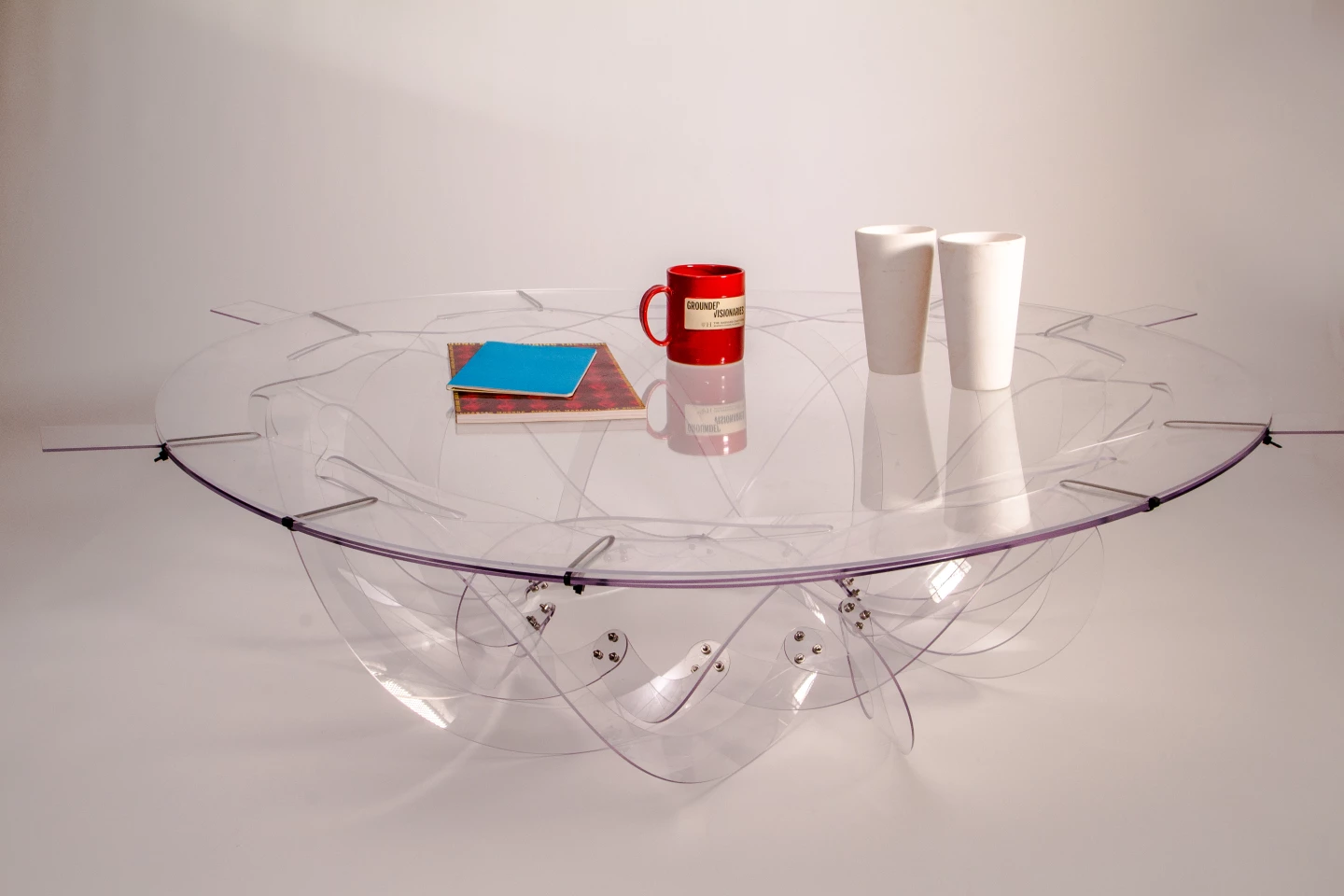Ordinarily, if you're building something, you don't want the materials to buckle under pressure. In a new Harvard University-designed system, however, that buckling action allows flat-packed objects to be twisted into useful three-dimensional forms.
Most existing "buckling-induced deployable structures" consist of linked straight pieces that are popped into shape via straight linear motion, which often requires a fair bit of force to be applied by the user. Folding chairs are one frequently frustrating example.
Seeking an easier alternative, Harvard researchers instead set about building items made up of linked curved pieces. Generally speaking, curved objects (such as beams) are less mechanically stable than their straight counterparts. In most scenarios, this is an undesirable quality. In the case of pop-up devices, though, it means that they're easier to buckle into the desired form.

Among other things, the team members created a circular coffee table with "legs" that are deployed by rotating a ring around the perimeter of the table, plus they built a slatted lampshade that can be opened up to let out more light – again, by rotating the perimeter of the shade relative to its main body.
Not only would such "Kiriform" objects be easier to ship and store than their traditional non-buckling counterparts, but they should also reportedly be cheaper to manufacture. What's more, because their form can be changed incrementally, they're more adaptable to different uses.
"This new platform can be extended to realize functional structures and devices from the millimeter to meter scale using a variety of different materials," says Prof. Katia Bertoldi, senior author of the study. "These structures could be used as medical devices, optical devices like camera focusing mechanisms, deployable wheels and turbines, furniture, or deployable shelters."
A paper on the research was recently published in the journal Advanced Materials. You can see the Kiriform objects in shape-changing action, in the video below.
Source: Harvard John A. Paulson School of Engineering and Applied Sciences





